
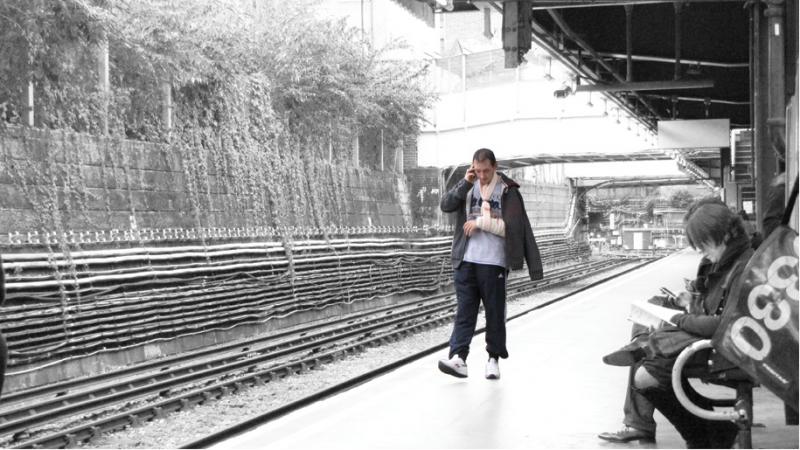
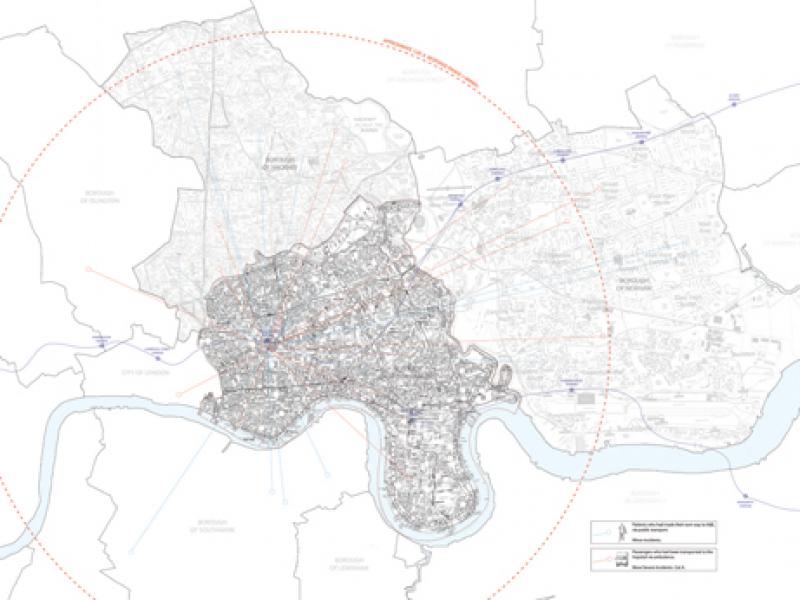
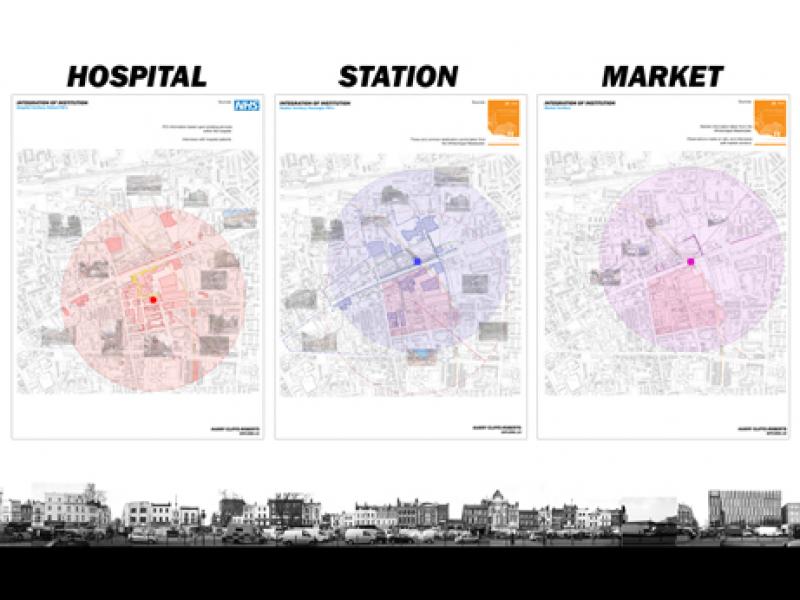
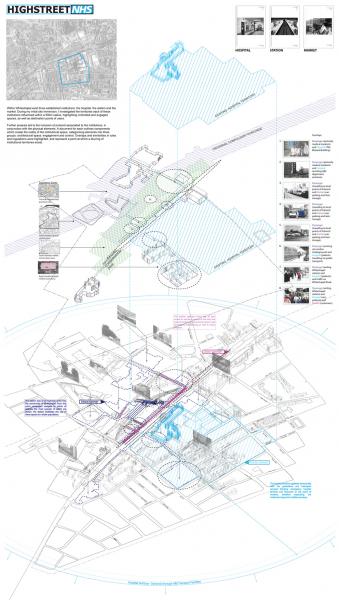
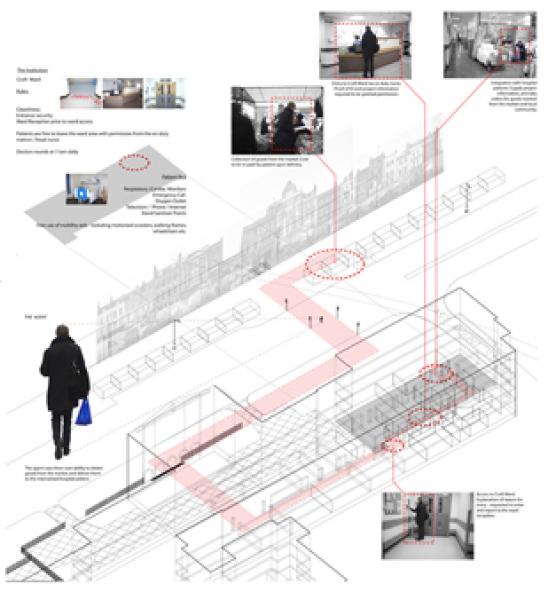

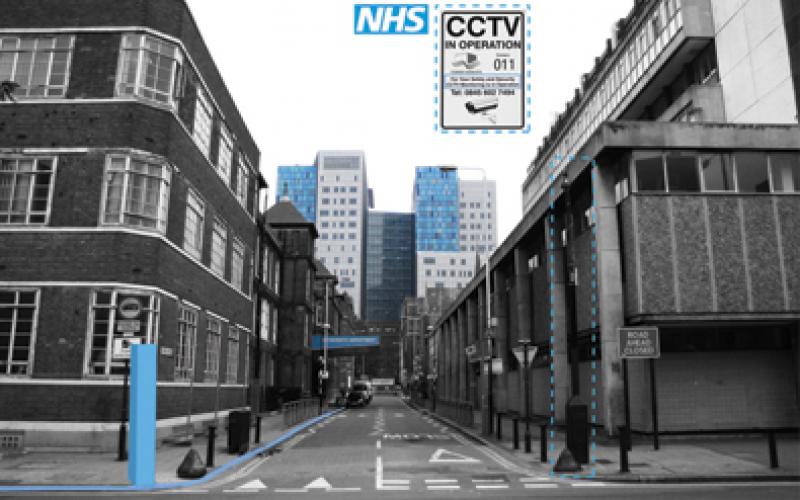
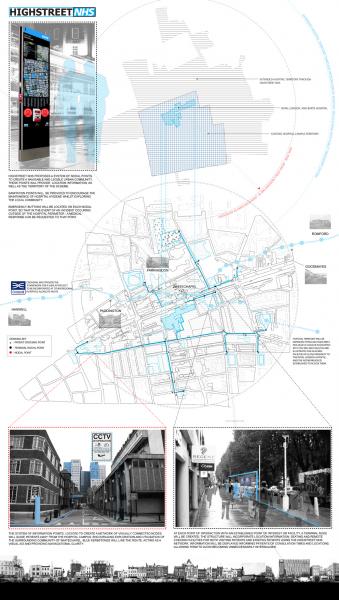
The integration of Crossrail into the transport network of London will see the current catchment areas of regional hospitals expanded, as patients use the new high speed link to reach medical treatment. The world leading facilities of the Royal London and Bart’s hospital will attract patients from further a field, displacing then from there own cognitive territories, and relocating them into a foreign community.
Highstreet NHS, provides a framework for hospital programme to be expanded into the surrounding community of Whitechapel. Previously internalised activities will be externalised and existing facilities in close proximity to the hospital utilised to re-integrate the hospital within its context; allowing patients, visitors and employees to use the rich resources of Whitechapel.
Through architectural insertion, strategy and the hi-jacking of existing systems, Highstreet NHS will see the overlap of two previously separated communities and the breakdown of the enclosed institution.